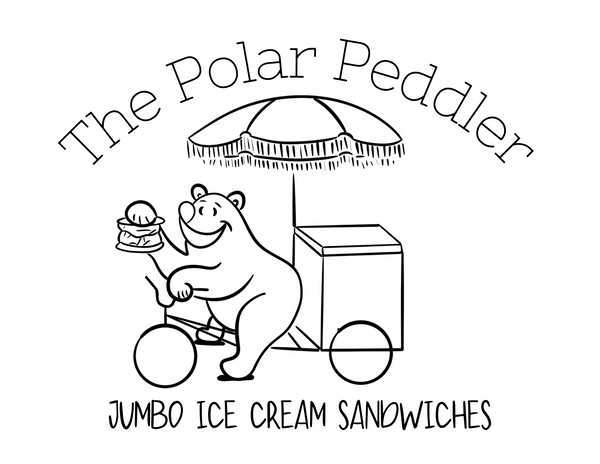Starting a frozen bike business can be an exciting and profitable venture, combining two popular industries - cycling and frozen treats. This comprehensive guide will walk you through the steps of establishing your frozen bike business from concept to operation.
Step 1: Research and Planning
-
Market Research: Begin by researching your target market. Identify the demand for frozen treats in your chosen location, along with the popularity of cycling. Determine your potential customer base, their preferences, and spending habits.
-
Competition Analysis: Study existing frozen treat and bicycle businesses in your area. Analyze their strengths, weaknesses, pricing, and customer service strategies. This will help you identify gaps in the market and opportunities for differentiation.
-
Business Model: Decide on your business model. Will you sell pre-packaged frozen treats, offer made-to-order treats, or a combination of both? Determine whether you will focus on retail sales, events, or partnerships with existing establishments.
-
Product Selection: Choose a variety of frozen treats to offer, such as ice creams, frozen yogurt, gelato, popsicles, and non-dairy alternatives to cater to a broader audience. Consider sourcing from local or artisanal suppliers to add uniqueness to your offerings.
-
Bike Configuration: Decide on the type of bikes you will use. Consider factors like size, storage capacity, and design. You might choose traditional ice cream carts, cargo bikes, or custom-designed freezer bikes.
Step 2: Legal and Financial Aspects
-
Business Structure: Choose a suitable legal structure for your business, such as a sole proprietorship, LLC, or corporation. Consult with a legal professional to ensure compliance with local regulations.
-
Licenses and Permits: Obtain the necessary licenses and permits to operate a food and retail business in your area. This may include health department permits, food handler certifications, and mobile vending permits.
-
Insurance: Secure liability insurance to protect your business from potential risks and accidents.
-
Business Funding: Determine how much capital you need to start and operate your business. Consider personal savings, loans, or investors as potential sources of funding.
Step 3: Location and Logistics
-
Location: Choose strategic locations with high foot traffic. Consider parks, busy street corners, tourist spots, and event venues. Ensure the chosen spots comply with local regulations for mobile vending.
-
Bike Customization: Customize your bikes to create a visually appealing and functional setup. Incorporate freezers, storage compartments, and branding elements to make your bikes stand out.
-
Suppliers: Establish relationships with reliable suppliers for frozen treats, cones, cups, toppings, and other essentials. Maintain consistent quality to build customer loyalty.
Step 4: Branding and Marketing
-
Business Name and Logo: Choose a catchy and memorable business name that reflects both the frozen treats and cycling aspects. Design a professional logo that can be easily recognized.
-
Branding Materials: Create cohesive branding materials, including menus, signage, and packaging. Ensure they are visually appealing and consistent with your brand identity.
-
Online Presence: Set up a website and social media profiles to showcase your offerings, location schedule, and engage with customers. Use high-quality images and engage in regular posts to build anticipation.
-
Promotions: Offer introductory promotions, loyalty programs, or special discounts to attract and retain customers. Collaborate with local events and organizations to increase your visibility.
Step 5: Operations and Customer Service
-
Staffing: Hire friendly and reliable staff who can provide excellent customer service. Provide training on food safety, bike operation, and handling customer inquiries.
-
Quality Control: Maintain strict quality control for both the frozen treats and the customer experience. Ensure the bikes are clean, well-maintained, and stocked with fresh products.
-
Customer Feedback: Encourage customer feedback and reviews. Use their input to continuously improve your offerings and services.
Step 6: Sustainability and Growth
-
Sustainability: Consider sustainable practices, such as using eco-friendly packaging, sourcing local ingredients, and minimizing waste. This can attract environmentally conscious customers and enhance your brand reputation.
-
Expansion: As your business gains traction, consider expanding to multiple locations or collaborating with local cafes and businesses to increase your reach.
-
Innovation: Regularly introduce new flavors, treats, or seasonal offerings to keep customers excited and coming back for more.
Starting a frozen bike business requires careful planning, dedication, and a creative approach to combine frozen treats and cycling into a unique and attractive concept. By following these steps and continually adapting to customer preferences, you can establish a successful and memorable business in this niche market.
Want a bike business without the work? Start a franchise with The Polar Peddler!
While starting from scratch demands significant effort and time, joining The Polar Peddler franchise provides an established blueprint for success. Benefit from a recognized brand identity, a well-honed business model, and comprehensive support. Franchising offers a streamlined path, equipping you with the tools, guidance, and network necessary to hit the ground running. Seize the opportunity to ride the wave of an already proven concept and fast-track your entrepreneurial journey with The Polar Peddler.
